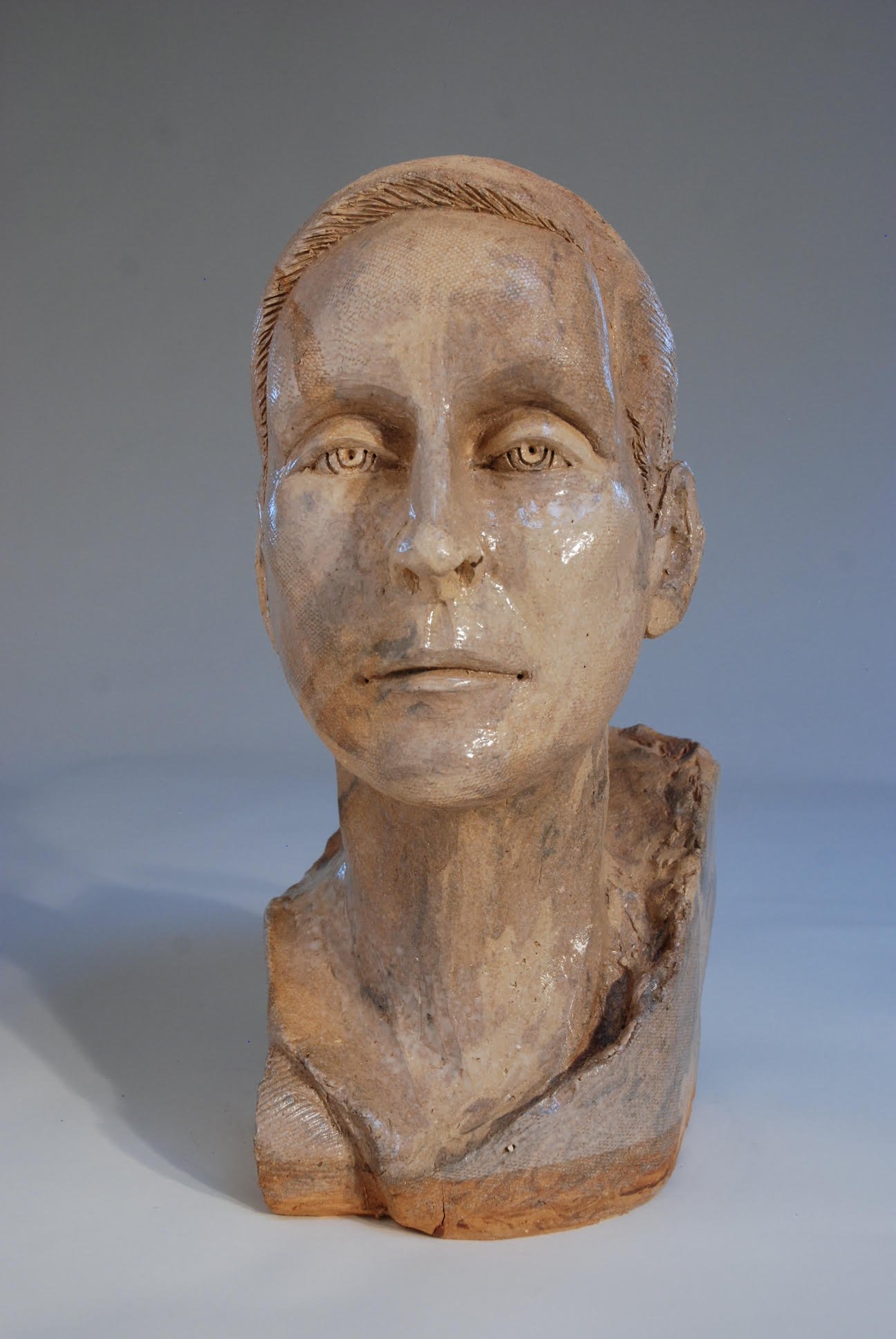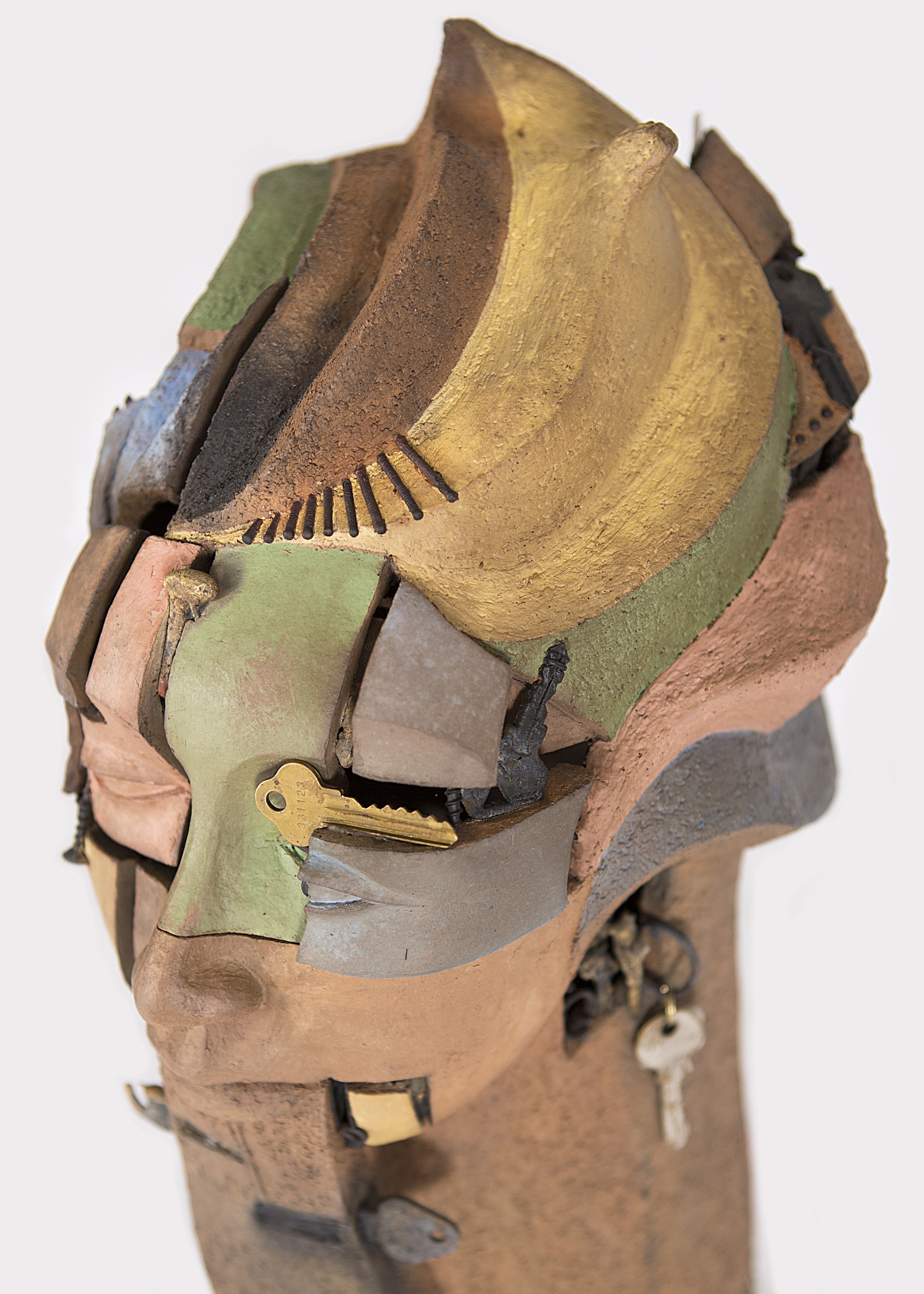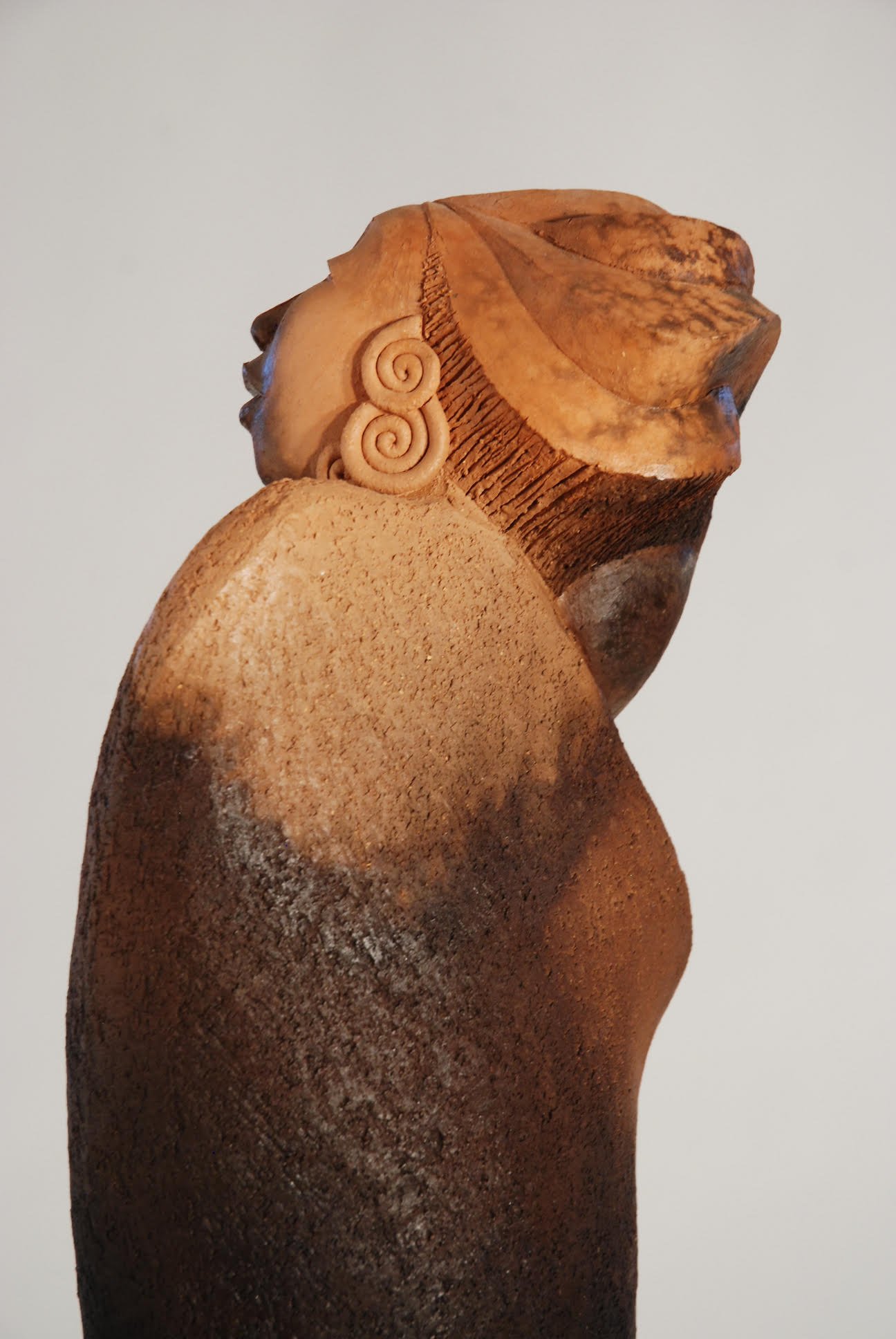CARLA RUKA
Carla with her cup from her 'make a cup' community project 2020
Young Carla in centre performing at the Auckland Museum
Carla in the studio
FEATURED: Carla Ruka
Me, Community and Hineukurangi
Ngāpuhi, Ngāti Whātua
Te taha o toku Māmā
Ko Tokatoka te maunga
Ko Wairoa te awa
Ko Ngāti Tauiwi ia
Te taha o toku Pāpā
Ko Puhangatohora te maunga
Ko Tahekeroa te awa
Ko Mahuri te marae
Ko Ngatokimatawhaorua te waka
Ko Ngāti Pakau te hapu
Ko Ngāpuhi ratou ko Ngāti Whātua ōku iwi
With a striking balance of kaha and manawa, uku sculptress Carla Ruka has been working to bring herself, communities, and Hineukurangi together for over 20 years.
Renowned for her formidable, large-scale, hand-built portraiture works Carla is in complete unison with Hineukurangi as she captures parts of her identity and wairua through her works. Funded by Creative New Zealand as the Ceramics Association of New Zealand’s touring potter, Carla is travelling around the motu to share her mātauranga and passion for uku with communities across Aotearoa. One of the places she will be visiting is Te Tai Tokerau, the home of her tūpuna, whānau, and home to some of her greatest mentors and sources of inspiration. She reflects here on her journey to this point and shares with us the power and potential Hineukurangi holds for ourselves and our communities.
Growing up in Tāmaki, Carla’s toi journey began when she joined Pounamu Huia kapahaka rōpu, under Ngapo and Pemia Wehi at Pounamu Training Systems and was able to learn more about her Māoritanga through kapa haka. She describes how learning kapa haka opened a whole new world for her and how she was able to see herself, and her culture in a new light. Pounamu Huia led her to Toihoukura, School of Māori Visual Arts and design, and from there her connection to these parts of herself grew as she explored whakairo, painting, multi-media and of course uku.
Whilst learning these different mediums she also subconsciously learnt about tikanga, manaakitanga and was supported to find her strengths. She reflects on how Māori institutions do this by nature, and she can recall countless ways her mentors such as Sandy Adsett were able to “teach these concepts without explicitly teaching them”. In her first year, she was also able to connect and become a member of the Māori clay artists collective Ngā Kaihanga Uku which became, and continues to be, an important pou and source of inspiration for her.
After five years at Toihoukura, Carla followed mentor Sandy Adsett to Toimairangi in Hastings where they were putting together the first Māori visual arts degree. Here, her ‘addiction’, as she describes it, to working with uku continued to grow. Despite there being no specific uku mentor and having to drive hours to the nearest kiln, Carla does not recall even considering working with a different medium at that point in time. When asked what she loves about working with uku she responded, “it’s not a medium, it is an essence. You’re working with a material that has so much spirit. You’re working with earth, fire, wind, and water”.
Carla’s respect for uku comes from recognising that it is Hineukurangi and Papatūānuku. She acknowledges Manos Nathan for sharing a lot of his mātauranga with her and for always demonstrating that level of respect and tikanga in his practice. Over time, Carla has strengthened her own relationship with Hineukurangi and talks about tikanga she employs such as karakia, hongi, and recycling any leftover uku. This level of respect is evident in her finished works as they each hold their own unique presence and wairua within a space.
One of the most important aspects of Carla’s tikanga has been ensuring that she looks after herself physically and mentally. Working with clay can be intensive and demanding on your tinana. Carla experienced this first hand when she left university and launched herself into full days of hand building which resulted in her injuring her hands to the point that she could no longer use them.
Although fully covered now through physio, Carla reflects on multiple setbacks and other challenges with her health that have impacted her ability to do the things she loves. She reminds us that respect for ourselves and our hauora is just as important as the respect we show our mediums as ringatoi. She reflects on how through these challenges her relationship to her toi has evolved, explaining “when I’m working with clay, we are going in one direction. Me and Hineukurangi are working towards what we want. We work in unison, and we don’t really care what other people say. We have mutual respect for one and other”.
Another integral part of Carla’s journey as a ringatoi has been through her teaching which she started in 2006. Through her teaching Carla has been able to articulate the unique techniques she has developed over the years such as her approach to coiling that balances the height and weight of the clay efficiently and effectively. This is one of Carla’s distinguishable skills and is crucial for hand-building pieces to the scale that she works at.
Teaching is another way Carla has been able to find and highlight her strengths and she enjoys helping others to do the same in their practice. She believes there are so many creative people out there who are just needing to learn the techniques to enable them to express themselves. This has motivated her to try and “put clay in a spotlight” so that more people can know about clay and access her as a Māori uku artist. She acknowledges that mainstream ceramics can be expensive, difficult to get into, and often operates very differently to how we approach uku in Te Ao Māori. For these reasons Carla believes it is imperative to create opportunities that reflect Indigenous ways of understanding and working with uku.
Carla’s up and coming artists talks, classes, community and kura workshops around the motu are one of the ways she is improving peoples’ access to uku. In this way she is giving back to her community and ensuring the Ngā Kaihanga Uku whānau continues to grow. In the future she wants to see more of our communities use and realise the potential of uku in bringing people together and for helping to overcome our collective struggles.
Indigenous clay artist and friend of Carla’s, Richard Rowland’s mahi is centred around community and in many ways inspires Carla. She was invited to share the experience of a project, where people volunteered in different ways to support a domestic violence kaupapa from contributing their time to make ceramic bowls used for the soup night, collecting firewood for the kiln, and providing and donating food for the volunteers. Carla was blown away by the realisation that everyone’s contribution, whether big or small, led to reducing domestic violence in the area following the project. Carla keeps the engraved stone that she received from the event on her desk as a reminder of how important our communities are and the positive effect that multiplies when we allow people to show up for each other in creative ways.
For Carla, ‘clay is her therapy’ and she is grateful to have found a medium where she can channel her wairua. A whakataukī that resonates with Carla is the following by Mark Twain, “Twenty years from now you will be more disappointed by the things you didn’t do than by the ones you did do. So, throw off the bowlines. Sail away from the safe harbour. Catch the trade winds in your sails. Explore. Dream. Discover.”
Written by Tai o Hī Tai o Hā Writing Intern Amelia Blundell (Ngāpuhi, Ngāti Kahu ki Whangaroa).






